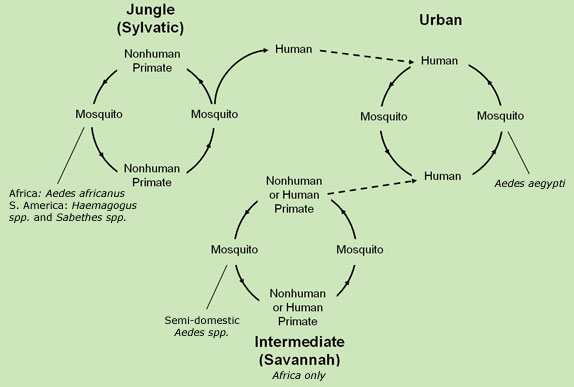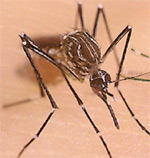Archive for the ‘Yellow Fever’ Category
“Scary Monsters and Nice Sprites” in the fight against Aedes Aegyptii
Friday, April 5th, 2019“…..The observation that such music can delay host attack, reduce blood feeding, and disrupt mating provides new avenues for the development of music-based personal protective and control measures against Aedes-borne diseases…..”
Acta Tropica
Volume 194, June 2019, Pages 93-99

The electronic song “Scary Monsters and Nice Sprites” reduces host attack and mating success in the dengue vector Aedes aegypti
Sudan set to protect over 8 million people with its largest ever yellow fever vaccination drive
Saturday, March 23rd, 2019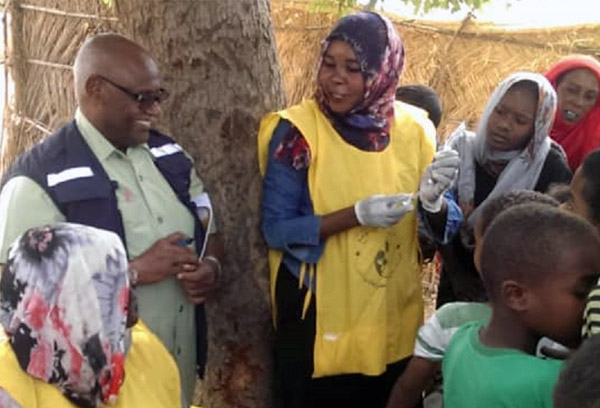
“…..The campaign forms a critical part of Sudan’s ongoing work to protect all populations against yellow fever epidemics, in alignment with the global Eliminate Yellow fever Epidemics (EYE) Strategy. The country plans to complement these yellow fever mass campaigns and ensure long-term protection through the introduction of yellow fever vaccination into routine immunization in the coming months.
“We acknowledge the commitment of the health authorities in Sudan to avail cash and fuel during this economic crisis to ensure that their people, especially children, are protected with a quality vaccine which will contribute to health security and making the world safer,” said Dr Naeema Al-Gasseer, WHO Representative in Sudan.
“Yellow fever vaccination is the most important tool we have to prevent yellow fever outbreaks. The vaccine will be freely available to any eligible person and will provide life-long protection against the disease. While protecting yourself against mosquito bites is important to reduce the risk of many diseases, only vaccination can eliminate the risk of yellow fever outbreaks,” she added……”
Yellow fever – Brazil: From December 2018 through January 2019, 361 confirmed human cases, including eight deaths, have been reported in 11 municipalities of two states of Brazil.
Wednesday, February 13th, 2019Brazil is currently in the seasonal period for yellow fever, which occurs from December through May. The expansion of the historical area of yellow fever transmission to areas in the south-east of the country in areas along the Atlantic coast previously considered risk-free led to two waves of transmission (Figure 1). One during the 2016–2017 seasonal period, with 778 human cases, including 262 deaths, and another during the 2017–2018 seasonal period, with 1376 human cases, including 483 deaths.
From December 2018 through January 2019, 361 confirmed human cases, including eight deaths, have been reported in 11 municipalities of two states of Brazil. In the southern part of São Paulo state, seven municipalities:El dorado (16 cases), Jacupiranga (1 case), Iporanga (7 cases), Cananeia (3 cases), Cajati (2), Pariquera-Açu (1), and Sete Barras (1) reported confirmed cases. In the same state, additional cases in Vargem (1) and Serra Negra (1) municipalities were confirmed on the border with Minas Gerais State. Additionally, two cases have been confirmed in the municipalities of Antonina and Adrianópolis, located in the eastern part of Paraná State. These are the first confirmed yellow fever cases reported since 2015 from Paraná, a populous state with an international border. Among these confirmed cases, 89% (32/36) are male, the median age is 43 years, and at least 64% (23/36) are rural workers.
Human cases reported so far during the current 2018–2019 period (July 2018 to Jan 2019) in nine municipalities in São Paulo State, as well as the confirmation of human cases and epizootic due to yellow fever in the state of Paraná, mark the beginning of what could be a third wave and a progression of the outbreak towards the Southeast and South regions of the country (Figure 2). While too early to determine if this year will show the high numbers of human cases observed in the last two large seasonal peaks, there is indication that the virus transmission is continuing to spread in a southerly direction and in areas with low population immunity.
PAHO reported 12 new cases of yellow fever in Brazil, possibly marking the beginning of the country’s third wave of yellow fever activity in the past 2 years.
Tuesday, January 29th, 2019“…….In the 2016-17 yellow fever transmission cycle, Brazil saw 778 yellow fever cases, including 262 deaths. In 2017-18, that number grew to 1,376 cases, including 483 deaths, as the disease spread to regions with low vaccination rates...….”
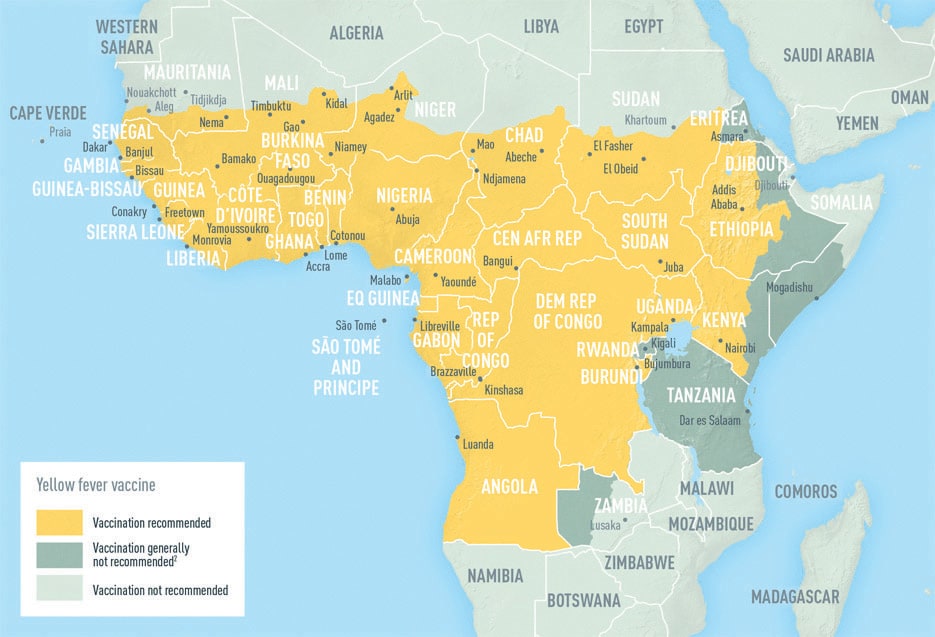
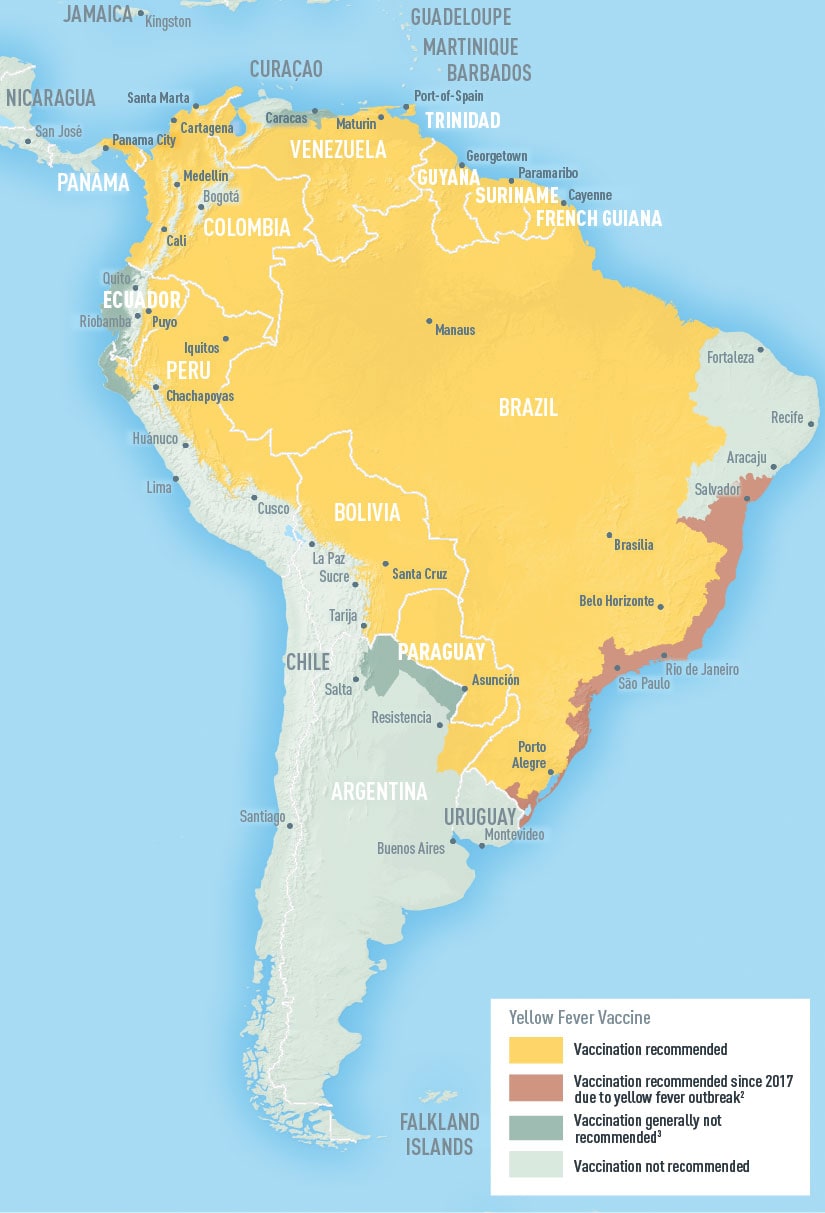
Nigeria: Since the beginning of the yellow fever outbreak on 12 September 2017, a total of 3 510 suspected cases including 74 deaths (CFR 2.1%).
Wednesday, December 19th, 2018EVENT DESCRIPTION Nigeria experienced a large yellow fever outbreak from September 2017 to late-March 2018 and since then, sporadic cases continued to occur. However since late-September 2018, a new cluster of suspected yellow fever cases emerged in Edo State, located in the southern part of Nigeria. In week 41 (week ending 14 October 2018), one presumptive yellow fever case was confirmed, followed by three presumptive cases in week 42, and more cases occurred subsequently. Between 22 September and 10 December 2018, a total of 97 suspected yellow fever cases, including 23 deaths (case fatality ratio (CFR) 23.7%) were reported across 15 (out of 18) local government areas (LGAs) in Edo State. More than half of these cases occurred in the last two weeks. …..


Since the beginning of the yellow fever outbreak on 12 September 2017, a total of 3 510 suspected cases including 74 deaths (CFR 2.1%), have been reported from all 36 states and the Federal Capital Territory……
Males constitute 58% of all cases and the most affected age groups are 1-10 years (41%), followed by 11-20 years (22%) and 21-30 years (19%).
PUBLIC HEALTH ACTIONS The International Coordinating Group (ICG) has approved 1.38 million doses of yellow fever vaccine from the global emergency vaccine stockpile for an immediate reactive mass vaccination campaign, targeting 1.24 million people in eight LGAs. Active surveillance has been enhanced across the country, including active case search and case investigations of alerts. A National Rapid Response Team (RRT) has been deployed to Edo State to conduct epidemiological, entomological and laboratory investigations and support local response efforts. The RRT is working with the state health authorities, WHO and other partners to implement outbreak response activities, including active case search, sensitization of health workers and communities, and entomological surveillance. Implementation of vector surveillance and targeted vector control activities are ongoing, with emphasis on managing Aedes species. WHO is providing technical support to the state and national authorities, including deploying yellow fever experts to support the country response in Edo State.
SITUATION INTERPRETATION A new focus of yellow fever outbreak has been confirmed in Edo State, Nigeria, following the large outbreak that started in September 2017 up to late-March 2018. While Nigeria introduced yellow fever vaccine into routine immunization in September 2016, the country remains vulnerable to the disease. The global strategy to Eliminate Yellow Fever Epidemic (EYE) identified Nigeria as a high priority country for large preventive mass vaccination campaigns. Entomological investigations conducted in various parts of the country identified the presence of competent mosquito vectors (Aedes aeqypti). In response to the 2017 outbreak, several rounds of reactive vaccination campaign have already been conducted in a number of states, while a scheduled preventive vaccination campaign is currently ongoing in six states.
In Edo State, yellow fever vaccination coverage in children below one year of age is about 69% and approximately 60% in the rest of the population, leaving a significant number of people susceptible to the disease. The current outbreak has occurred close to the state capital, Benin city, which is moderately cosmopolitan, with high population movements due to trade.
An influx of persons with low immunity to yellow fever coming from other parts of the country, Europe and America into Edo state for the Christmas holidays is expected. All these underlying issues are significant, calling for the rapid implementation of the upcoming reactive vaccination campaign.
157
Nigeria: As of Nov 25, 2018, a total of 3,510 suspected YF cases, including 74 deaths (the case-fatality rate is 2.1%).
Saturday, December 8th, 2018
A yellow fever outbreak has been active in Nigeria since September 2017, with all 36 States plus FCT reporting at least one suspected case.
A multi-agency national Emergency Operations Centre is coordinating the national response.
A new cluster of suspected cases of yellow fever was reported in Edo state on 22 November 2018. Since 9 September 2018, a total of 36 suspected cases, 2 presumptive positives including 8 deaths have been recorded.
Thirteen additional samples from Edo state were tested at a Nigeria laboratory outside the yellow fever laboratory network and nine samples were reported as positive. Aliquots of these samples have been sent to the World Health Organisation yellow fever reference laboratory, IP Dakar for confirmatory testing.
A National Rapid Response Team has been deployed to Edo State and is working with the Edo State Ministry of Health and the World Health Organisation and other partners.
The Rapid Response Team’s focus has been finding cases, sensitization of health workers and communities, entomological surveillance etc in order to define an appropriate response.
A planned yellow fever preventive mass vaccination campaign targeting 20,461,805 persons in six states (Borno, Kebbi, Niger, Plateau, Sokoto and the FCT) commenced on 22nd November 2018.

WHO is releasing more than a million doses of yellow fever vaccine from its emergency stockpile after the deadly mosquito-borne disease killed 10 people in southwestern Ethiopia
Wednesday, November 7th, 2018Yellow fever earned New Orleans the nickname “Necropolis” — city of the dead.
Monday, November 5th, 2018NPR
“…..Yellow fever didn’t just kill. It created an entire social structure based on who had survived the virus, who was likely to survive it and who was not long for this world. And that structure had everything to do with immigration and slavery….”
